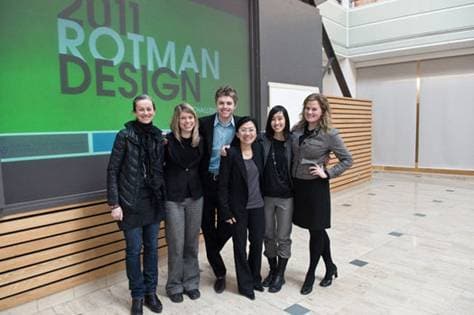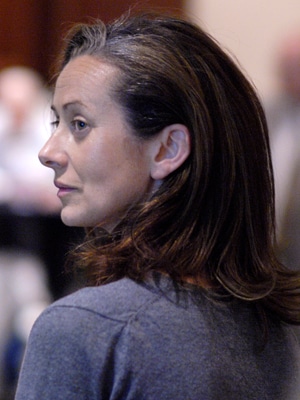
Test of Doctor-Patient Interactions
In the early 2000s, Mayo Clinic physician Nicholas LaRusso asked himself a question: If we can test new drugs in clinical trials, couldn't we also test new kinds of doctor-patient interactions. The Mayo Clinic Center for Innovation was soon born. Lorna Ross heads up its Design Group
The Mayo Clinic Center for Innovation’s projects are focused around three areas: Redesigning Practice, Community Health Transformation and Care-at-a-Distance. Which currently contains the greatest challenges?
All three hold uniquely different challenges, but I would say Redesigning the Practice has the greatest amount of scrutiny around it. That’s because there is an existing practice model in place and everyone who works here is highly invested in it. As you can imagine, any group that has been tasked with possibly undoing some of that is going attract a lot of attention. As a result the process risks becoming ‘design by consensus’, so it’s been quite challenging to foster the divergent exploration from which we hope the disruptive model may emerge.
The Community Health Platform is something Mayo has less precedent in -- though we do currently care for the local Rochester community in addition to almost 60,000 employees and their dependents. Historically, Mayo has operated very much as a ‘destination medical centre for specialist and sub-specialist care’: people come to us and we are able to micro-manage and control the environment that they come into. Some have said it’s like getting onto a spaceship, and in many people’s minds, that’s why Mayo is so hyper-efficient -- because we manage every aspect of each patient’s experience once they get here.
Many groups within Mayo have been driving towards efficiency for years, adopting principles or standardized practices like Six Sigma and Lean, but the problem is, health care is extremely unpredictable. You can never standardize something that is so personal and has so many moving parts. Add to these complications our sheer size and the fact that our physicians practice according to a more individualized practice model that often defies standardization (which is both good and bad). So we are dealing with this infinite combination of variables, within an industry driving towards standardization.
Then there is Care at a Distance, which to me, feels like the least complicated platform, because it really comes down to creating physical tools to deliver on the exciting potential and well overdue promises of ‘telemedicine’. If you ask 10 different people what the quintessential Mayo experience is, you’ll get 10 different answers. Yet we’ve been trying to package some of Mayo’s services so that they can be effectively delivered at a distance via computers and video technology that recreate the experience in different locations. Of course, some of the dynamics that work for an experience in the downtown Rochester setting – which is a huge clinic -- would be really inappropriate in a smaller clinic, so we have to take that into consideration. The challenges here lie in matching the experience to the environment and the context.
Much of the work you do entails getting stubborn humans to behave differently. What have you found to be the best approach to this age-old challenge?
Like the word innovation, the term co-creation gets overused these days. But whenever you’re working with a group of people, there is real value in figuring out a role for each of them to play in the process. The alternative is simply handing something that you’ve created over to them and trying to convince them of its merits. If people have a hand in crafting something, it’s much easier for them to embrace a new model. It’s also more respectful of the inherent complexity of the work everyone does here every day; we would never even imagine that one isolated group, such as ours, could have a complete and comprehensive understanding of everything that they do.
While the idea of engaging people in the creation process is great in theory, it often doesn’t always work out as planned, because particularly in our environment, people simply don’t have the time. Taking up a surgeon’s time is extremely expensive -- especially for something that is seen as a non-essential activity (one that doesn’t deal directly with patient care). So we have to be very careful in terms of how we use peoples’ time. We tend to do a lot of workshopping with groups and ‘low-touch moments’, where we’ll sit in on their meetings and support them in being more effective together. As much as possible, we try not to do the work for them. People often ask us to do some work for them, but we always say, ‘How about we do the work together?’ Doing it ourselves would likely be much faster, but that’s a trade-off we’re willing to make, because we realize we’re investing in long-term relationships and smooth hand-offs.
One key learning for us has been to invoke the patient as the voice of reason whenever possible. I’ve been here two years now, and every single person I’ve met is completely focused on our patients. As a result, they are strongly drawn to any idea that will improve patient experience and outcomes. If we can show a positive benefit for a patient, people will put their assumptions and needs aside and listen.

Much like business, medicine is driven by data. But as Dean Roger Martin has said, uttering the words “Prove it” means death to innovation. How have you dealt with this in your work?
Whenever we get people talking about ‘what we do’, what comes out of that is that the Mayo Clinic is an evidence-based community of scientists that practices medicine and conducts extensive research. So it’s definitely all about evidence. And yet, whenever my colleagues and I watch physicians with patients, we are reminded about the art and science of medicine. There is so much that is not scientific about what they do; a big part of their job involves human connectedness and reading subtle signals. The physicians recognize these qualitative aspects or ‘intangibles’, so we can appeal to that whenever we deal with them one-on-one.
At the same time, when we present things to groups, we are careful to never say things like, you know, ‘We kind of felt that...’ -- we can’t ever be too vague about things. When we do formal presentations, we do whatever we can to use their language and metrics. If we run an experiment, we try to establish a ‘baseline’ -- even if it’s not a traditional baseline, it’s a point that we’ve moved away from and measured again, and here’s what we saw in terms of change. This enables us to show that we pay attention to the importance of measuring the impact of what we are doing. But we always say right up front that our work is very much based on understanding the complexity of an experience rather than trying to standardize it.
Patients are similar to physicians in this sense, because when they come into the institution, they all present really differently, but you begin to notice similarities in terms of what they really need from the experience, what they’re craving; when they feel in control and out of control, and what they look to the institution for. What we’re saying is, you can learn from different kinds of data. We aren’t trying to replace quantitative data, but if you want to know as much as possible, you have to use both quantitative and qualitative methods, because there are some things you can’t learn until you go in much deeper and you have to do this at an individual level. So it’s a case of, how do you then re-combine these two kinds of data? We want to add that to this conversation, so people learn to consider both quantitative and the qualitative aspects when they make important decisions.
This past March, you participated as a judge in the Rotman Design Challenge, which saw teams from across North America compete based on the following challenge from the Mayo Clinic: “Develop a new offering targeted at a specific patient population that will enable that population to improve their prospects for a healthy future.” Tell us about the winning team’s idea, Mayo Moms.
The winning idea came from the Ontario College of Art & Design University (OCADU) team, which came up with an initiative aimed at breastfeeding mothers. Overlooking the intense emotions so often sparked by the topic of breastfeeding, the project envisioned Mayo as a facilitator, not a provider of healthcare per se. By certifying women who had previously breastfed successfully as ‘Mayo Moms’ and partnering them with mothers-to-be within the community, the students both leveraged Mayo’s brand and pointed to the creation of a potentially limitless social network.
I loved this concept because it imagined a relationship with Mayo outside of the traditional physician/patient dynamic to one of a relationship directly with the brand. It was a way of meeting the user/customer/patient in a new space and a new conversation and a new relationship. I think this is exactly what Mayo needs in order to remain relevant into the future. Having said that, when it comes to bringing design thinking to an organization, there is no playbook: we’re all doing it for the first time.
Lorna Ross oversees the Design Group at the Mayo Clinic’s Center for Innovation. Previously, she ran the Design for Human Wellbeing Group at the MIT Media Lab Europe. A graduate of London’s Royal College of Art, she has held a faculty positions at the Rhode Island School of Design and the National Institute of Design in Ahmadabad, India.
Innovation Platforms
The Mayo Clinic Center for Innovation focuses on five platforms:
1. Mayo Clinic Connection
Goal: Mayo care…anywhere, anytime. Extend Mayo Clinic specialty expertise to patients at a distance.
2. Prediction and Prevention
Goal: Change the course of chronic disease through early detection, exposure modification and pre-clinical intervention.
3. Wellness Experience
Goal: Be the world leader in Wellness by engaging individuals and their families with an integrated, lifelong, longitudinal partnership in health.
4. Destination Mayo Clinic
Goal: Deliver a signature on-site experience by offering the most patient-centered, integrated, coordinated patient experience in the world.
5. Culture and Competency of Innovation
Goal: Enable innovation across Mayo by ensuring employees understand the role of innovation and routinely integrate it into their daily work.





